In 2020, Ruger introduced the Wrangler. This six-shot single action revolver was designed to compete with the likes of other inexpensive .22 rimfire revolvers, namely the Heritage Rough Rider. The Wrangler, in all its different forms, is a hit item. I’ve owned a few and, for the money, they are durable and probably more accurate than anyone who can shoot one. But the Ruger Wrangler is based on another handgun that is better in nearly every way— the Ruger Single Six.
In my humble opinion, the Single Six family is still one of the best rimfire handguns in production. Follow along, have a laugh, and maybe learn a little something with my completely biased and unfair review.
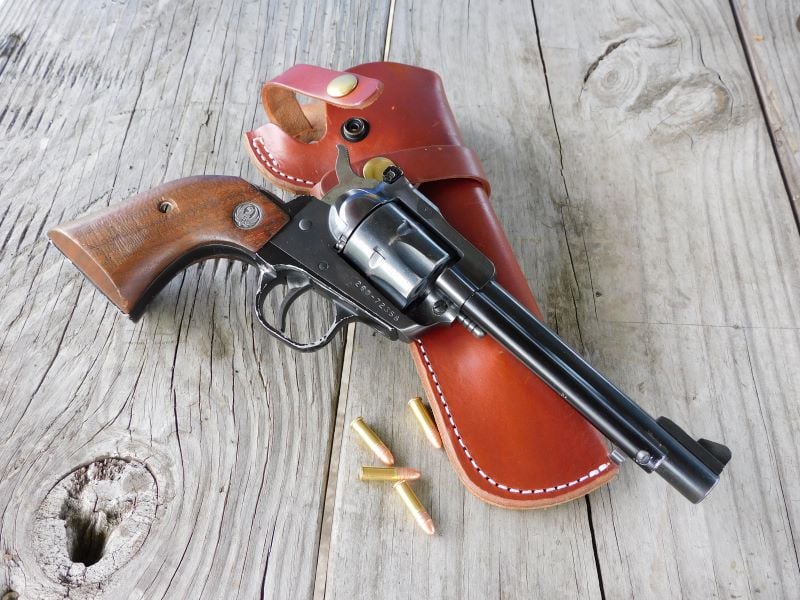
History of the Single Six
For the American shooting public in the 20th century, the double-action six-shooter was ubiquitous. But lawmen and citizens were still making good use of old 19th century single action handguns. The famous Colt Single Action Army revolver enjoyed a run of nearly 70 years before Colt discontinued the model in 1941 due to the Second World War. After the war, the double-action revolvers and semi-automatic pistols so heavily used in the conflict supplanted the single action. Continued interest in the Hollywood Western and, most consequential to our story, the TV Western, probably saved the single action from the ash heap. American families could see the Wild West from the comfort of home and demand for the guns of the lawmen and outlaws on the silver screen revived.
Bill Ruger saw an opportunity when he designed and marketed the Single Six in 1953. This six-shot revolver had the same sleek profile of the Colt Single Action. It even operated like one. But it was chambered in the useful, yet mild 22 Long Rifle cartridge. For its cartridge and intended use as an outdoorsman’s tool and recreational plinker, the Single Six was affordable but overbuilt. The handgun has an investment cast steel frame and aluminum grip frame. It functions on coil springs, rather than delicate leaf springs.

In 1973, the New Model Single Six came to market. This model was nearly identical to the old, except it used pins instead of screws in its frame assembly. It dispensed with the half-cock reloading step and picked up a transfer bar safety so the revolver could be carried with all six rounds loaded. Over the years, the New Model has become the backbone of an entire family of pistols in different calibers, capacities, and barrel lengths.
Endless Options
If you are looking for a .22 caliber revolver, chances are the Ruger Single Six will not be the first option. Today, the all-steel precision-fit Single Six commands a premium over a gamut of competing options. But if one appreciates craftsmanship, some form of the Single Six is a must have. In the revolver’s defense, there is a nearly limitless variety of models you can choose from that are hard to beat.
The base model Single Six is chambered for .22 Long Rifle, has fixed sights, and comes with a convertible .22 Magnum cylinder. But most other variants in the lineup come with adjustable sights and different add-ons and finishes. The .22 LR/.22 Mag convertible models can be had in either blued carbon steel or stainless steel with barrel lengths from 4¾ inch to 9½ inches. There is even a stainless 7½ inch barreled model dovetailed for an optic. Other Single Six models come in either .17 HMR or .32 H&R Magnum. This does not include the Single Seven, Single Nine, and Single Ten Models that open up your options even further.
Me and My Single Six
One of the first handguns I ever shot was a Ruger Bearcat in .22 Long Rifle. It is the smaller brother of the Single Six. After shooting it recently, I discovered the Bearcat was just too small for my hands. I soon bumped into an adult-sized Single Six at one of my favorite shops. It was a New Model Single Six with a 5½ inch barrel and adjustable sights. It looked worse for wear so I adopted it. Over the last six years, I have put thousands of rounds through it without any failures and carried it into some interesting locations. Although the Smith & Wesson Model 10 holds the distinction of being my favorite handgun, this Single Six comes in a close second.
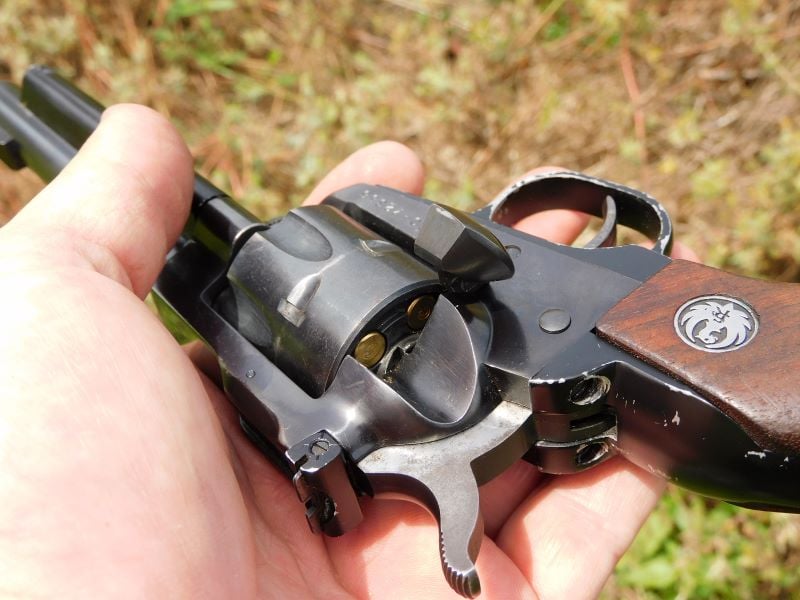
The Single Six In Operation
How your Single Six revolver works will depend on whether you have an Old or New Model. The Old Model loads like the old Colt Single Action. The hammer is drawn to half cock so the cylinder will spin. The loading gate is pinched open and each round is loaded one at a time. Unmodified Old Models will not have a transfer bar safety so they should be carried with the hammer under an empty chamber. Ruger still offers to upgrade the Old Model for free to the new safety. The New Model Single Six already has a transfer bar safety and another mechanical feature that differentiates it from the Old. Opening the loading gate allows the cylinder to rotate freely. There is no need to touch the hammer and loading is accomplished by simply rotating the cylinder to insert your ammunition.
Outside these differences, the Ruger Single Six fires just like a Colt Single Action. The hammer has to be cocked for every shot. Pulling the trigger trips the hammer, nothing more, nothing less. Hence the term single action. While some Single Six revolvers come with fixed sights, the adjustable sight models are more common. The sights consist of a rear notch that is adjustable for windage and elevation. The front sight is a serrated ramp that is screwed in place. This gives you some flexibility if you wish to change out the front sight. The longer-barreled Single Six revolvers give a clear sight picture on relatively small targets out to about 35 yards.
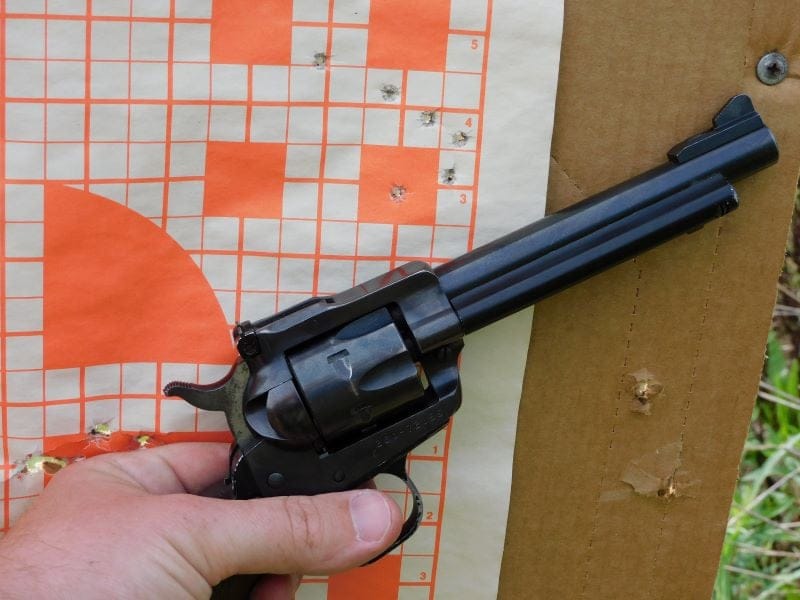
I have tried shorter and longer barreled Single Six models, but I found my 5½ inch model to be the overall sweet spot between carry ability and shootability. The Six is not a lightweight gun. Fully loaded, mine weighs in at 2 lbs. 12 oz.—just heavy enough to hold steady, but just light enough to be easy to pack. In the hand, the balance point is right under the cylinder and the sights fall into line when pointing the pistol at a target. From a rested position, I can generally keep six rounds in a six-inch bullseye target at 50 yards.
While I would be starving in squirrel country, that is more than enough accuracy to catch a milk jug or coyote on the wing. At more reasonable distances of 10 to 15 yards, I can reliably place most kinds of ammunition into inch-size groups offhand. While my revolver is a sample size of one, I have yet to have a single dud round or other malfunctions. Even dud-prone loads like the Remington Thunderbolt load, always popped. The Single Six has a robust hammer compared to the Colt clones and the coil spring provides plenty of power. Usually, a tight mainspring would make the trigger pull stiff. On my Lyman scale, the trigger on my revolver breaks at 2 lbs. 2 oz. Not bad at all!
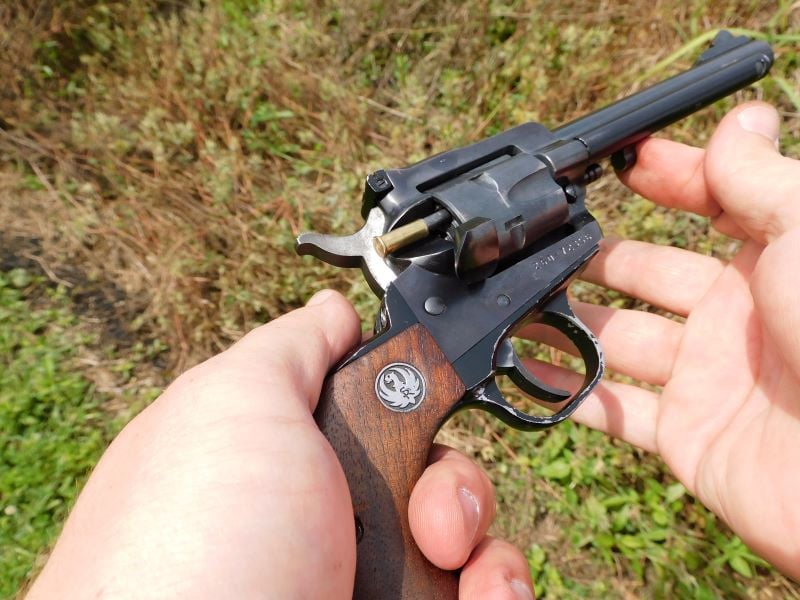
What I Don’t Like — Loading the Single Six
While the Single Six whets my appetite for rimfire fun, there are aspects of the revolver that will not appeal to some. It is a chunk and it is not cheap. Operationally, the loading and reloading process is not as streamlined as it could be. When the loading gate is open, the cylinder is free to rotate clockwise. There are audible clocks as the cylinder rotates. On the old Colt clones like the Heritage Rouge Rider, that is an audible cue to indicate a chamber is lined up for you to insert a new cartridge or kick out the spent brass with the ejector rod. Not so with the Single Six. When you first see brass, that is your cue to kick out your empties and insert fresh rounds. If you miss a chamber, you will have to rotate the cylinder all the way around to try again. The new Wrangler revolvers also do not give you an audible cue, but the cylinder does rotate both ways, allowing for some forgiveness if you miss a chamber.
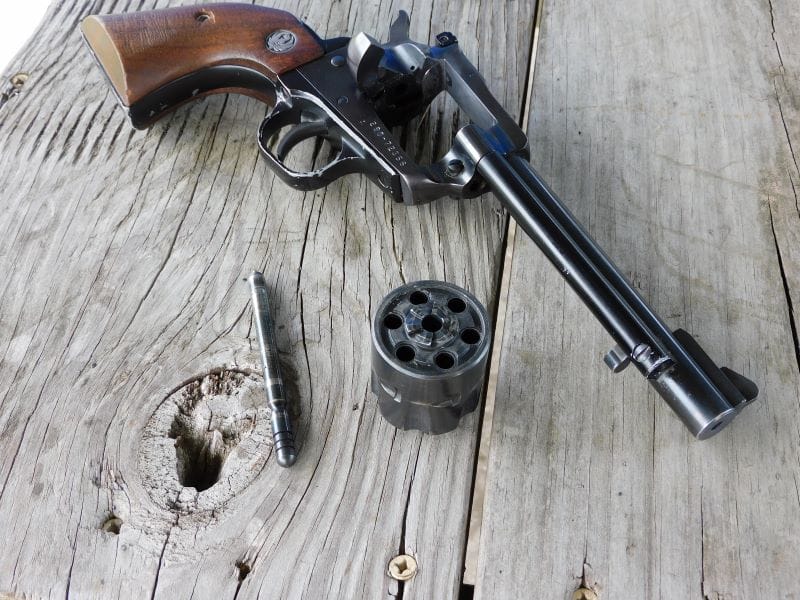
Parting Shots
The Ruger Single Six has been riding in holsters for 70 years and Ruger continues to produce a number of interesting variations to this day. But given the existence of the ever-present and cheap Heritage Rouge Rider as well as a host of Ruger Wrangler revolvers with a variety that mirrors its predecessor, I have to wonder if the days of the old Single Six are numbered. A .22 caliber single action is, at best a tool to dispatch small critters and at least a fun range gun to bounce tin cans with. For these applications, the Heritage and Wrangler are fine guns for the task and they are priced to sell. What is never certain is how these guns hold up over time. For those of us who prefer to buy once and cry once, the Ruger Single Six is an objectively better handgun beyond question. Ruger, in their infinite wisdom, has not forgotten that—yet.

